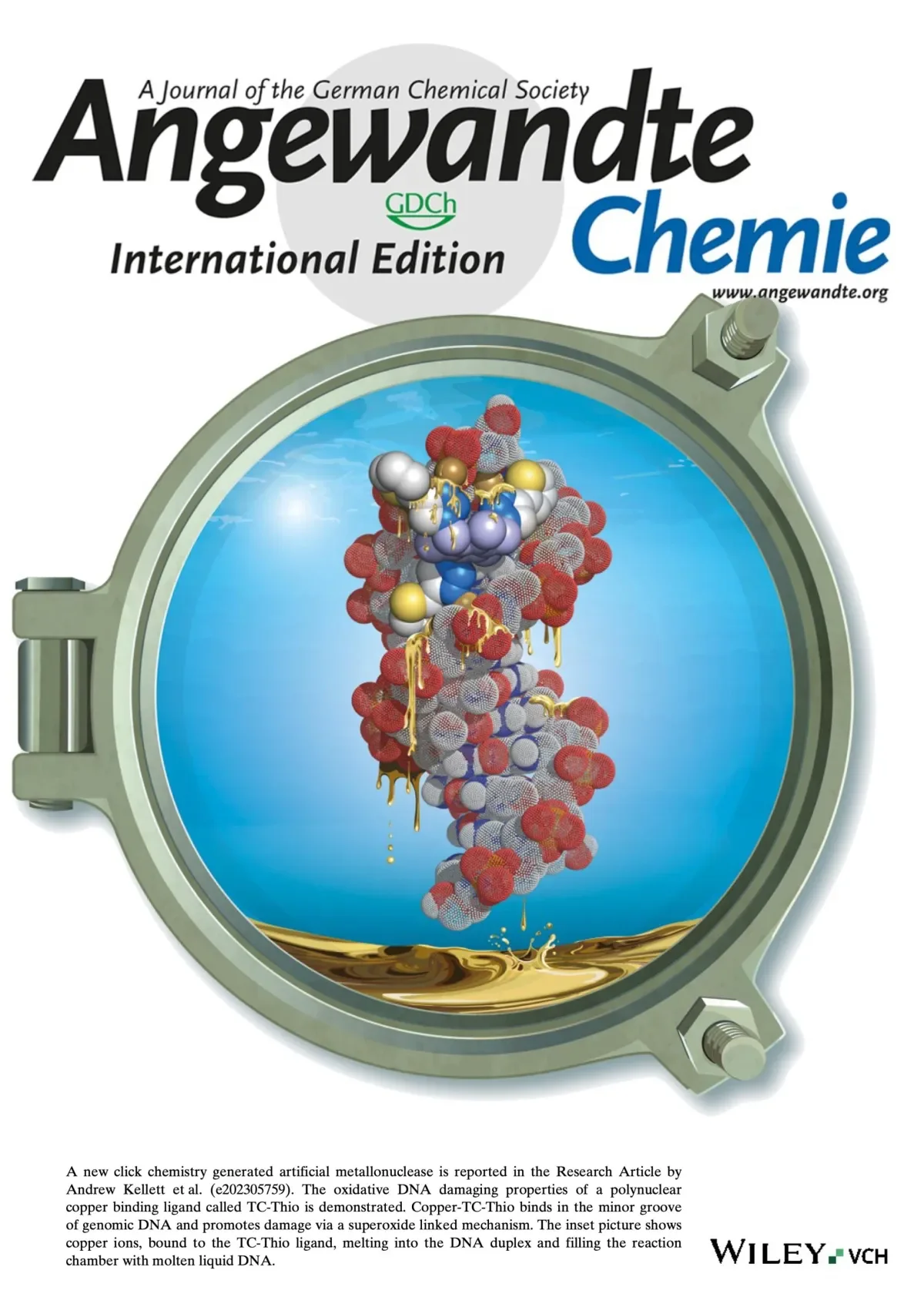

Prof Andrew Kellet and team create new potential anti-cancer drug using ‘click chemistry’
Prof Kellett and his research team, along with collaborators from the Science Foundation Ireland Solid State Pharmaceutical Centre (SSPC), the University of Southern Denmark and Chalmers University of Technology in Sweden, created a compound called Tri-Click Thiophene, or TC-Thio, which is a promising class of anticancer agent that binds and cuts cancer DNA.
The insights and methodologies presented in their work are expected to inspire future research in this area. The impact of their contribution has been recognised by the editors of the high-profile journal Angewandte Chemie, who highlighted the publication on the journal’s cover and designated it as a ‘hot paper’.

The team identified how TC-Thio, in the presence of copper ions, could bind and cleave DNA, and found that its DNA damaging properties were similar to Temozolomide, a drug approved for treating brain cancer. Importantly, the mode of action by TC-Thio is different to Temozolomide.
In the 2000s, click chemistry revolutionised the field of synthetic chemistry by enabling two chemical components to be clicked together in a highly efficient manner.
The team anticipates that the use of click chemistry in the synthesis of new DNA-targeted therapies will increase, leading to a greater number of potential drugs being screened and ‘hits’ being found in the fight against cancer.
“Cancer, the second leading cause of death worldwide, has been a catalyst for the scientific community to develop new treatment strategies, especially given the severe side effects associated with current chemotherapies,” said Prof Kellett.
“There are many ways a scientist can do this,” said Prof Kellett. “Some examples are devising novel medical devices to enhance surgical outcomes and reduce chemotherapy requirements, improving drug delivery systems, modifying existing drugs to augment their effectiveness and minimise side effects, or designing and synthesising entirely new chemotherapeutic modalities.”
“Designing new chemotherapies holds tremendous promise in the search for treatments that maximise benefits, minimise drawbacks, and save more lives than ever before. Applying click chemistry, here, makes it much more efficient to find new drugs that might do exactly that.”
“Historically, some of the most successful anticancer drugs have targeted DNA, rendering it dysfunctional for cancer cells. This makes DNA an effective target, and many scientists are focused on achieving this with their newly developed drugs. TC-Thio binds to and damages DNA and we are now focusing on further developing and evaluating it as a potential anti-cancer drug.”
Links:
Paper (open access): https://doi.org/10.1002/anie.202305759
Cover (open access): https://doi.org/10.1002/anie.202310432
SSPC, The Science Foundation Ireland Research Centre for Pharmaceuticals: https://sspc.ie/
